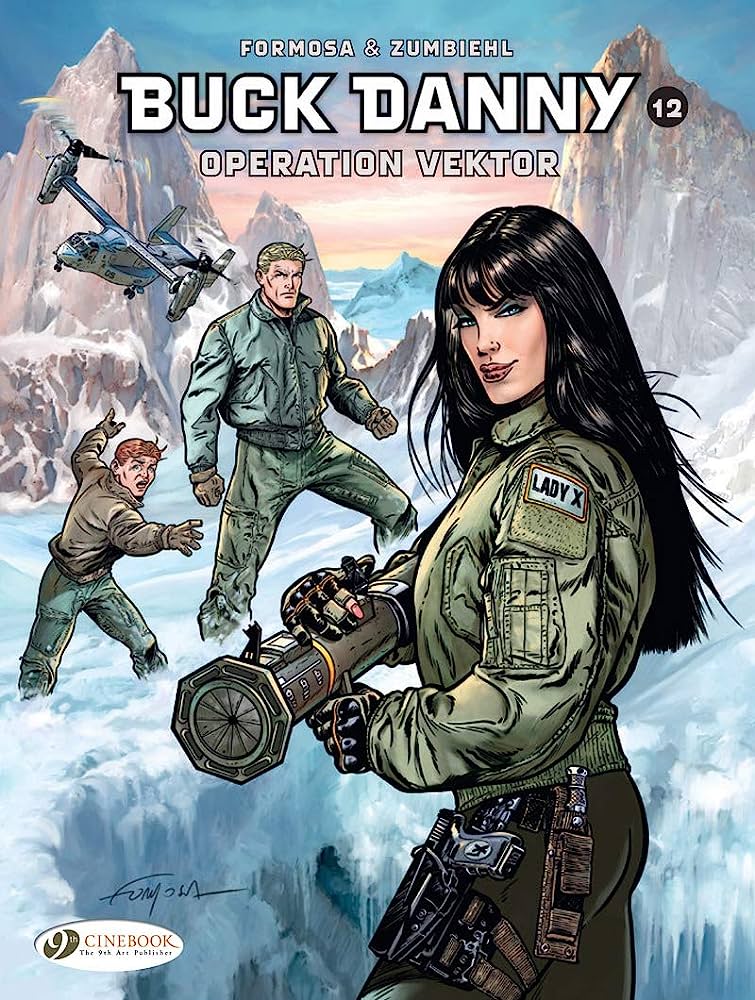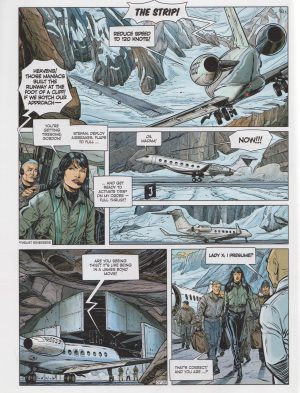Review by Roy Boyd
Operation Vektor starts by whacking us over the head with a bunch of unnecessary detail about the range of assorted aircraft. It’s not vital to the story, but establishes the credibility of creators who know their stuff. Like there was ever any doubt.
Continuing from Vostok, Do You Read Me?, Frédéric Zumbiehl’s script is wordy and exposition heavy, especially in the opening sections. This includes an explanation of the villain’s evil plan, which boils down to releasing a virus to cause a global pandemic and blame Russia for it, thereby ushering in a new cold – or even hot – war between Russia and the USA. Considering this was originally released in 2019, it’s astonishingly timely, with their evil plan effectively what many (mostly tinfoil hat-wearers) believe is what happened, bar changing some of the major players.
Leaving aside the Covid-19 angle, what about the actual book? Well, the villain who explains the evil plan is a bald Japanese evil scientist with mis-matched eyes and a constant simper. He’s basically Dr Evil from the Austin Powers movies, but dialled up to 11, and he delivers his monologue in an underground secret bunker that someone says is “just like being in a James Bond movie”. So, we’re still not really doing subtle or overly sophisticated, and the list of tropes ticked off is long.
As ever, there’s lots of great illustrations of planes in flight. Not only are the machines very accurate, but Gil Formosa is able to lay out pages and panels in a way that leaves no doubt about what’s happening, and to whom. This is no mean feat with this type of material, and Formosa deserves credit for his clear storytelling. His people aren’t as strong, with everyone looking like they’re based on characters from Archie Comics (all the men) or Modesty Blaise (all the women). This is a strangely retro element in a book where the artwork otherwise looks contemporary, and is no doubt due to its own origins many decades ago.
The stiffness in facial expressions is matched by characters’ behaviour, all of who could charitably be described as two-dimensional. Zumbiehl’s plot unfurls with double-crosses and undercover spies galore. At times, there’s perhaps too much going on, though little of it is very surprising, with the story running along well-worn tracks. Although they wear their research on their sleeve, it’s not all just facts for fact’s sake, and the creators are very smart at hanging pivotal plot developments on seemingly obscure details.
This is executed to a fairly high standard, though it’s undeniably stronger when leaning into the martial aspects of the story, rather than the clunky character interactions. This volume, the middle episode of a trilogy, ends on a cliffhanger with all the emotional peril of a 1940s Saturday morning serial like Flash Gordon (or, of course, Buck Rogers). The story concludes in The Pact, and we’ll just have to wait until then to see who survives.





